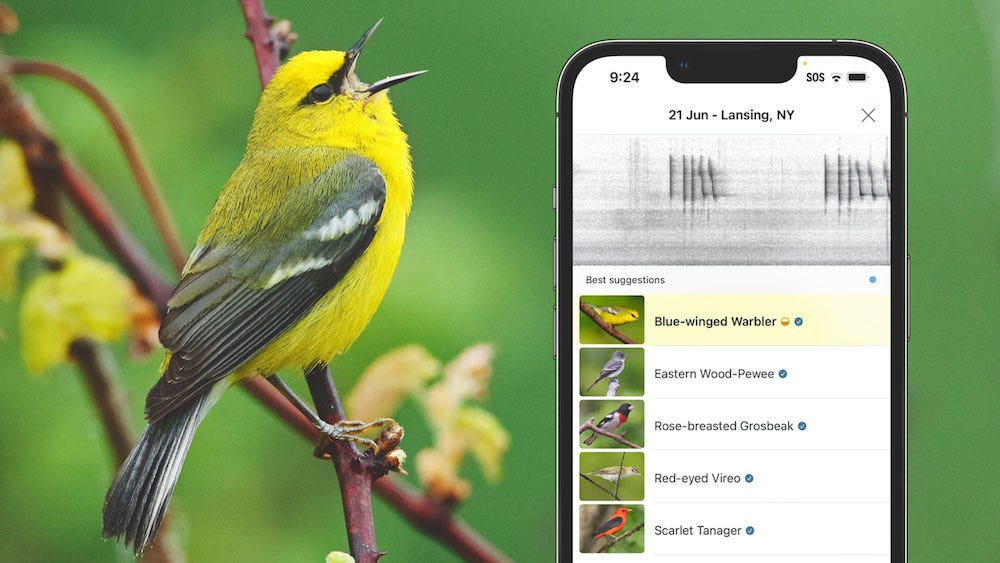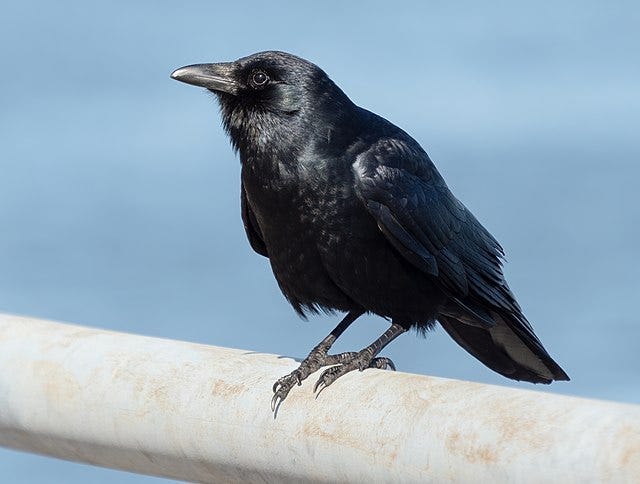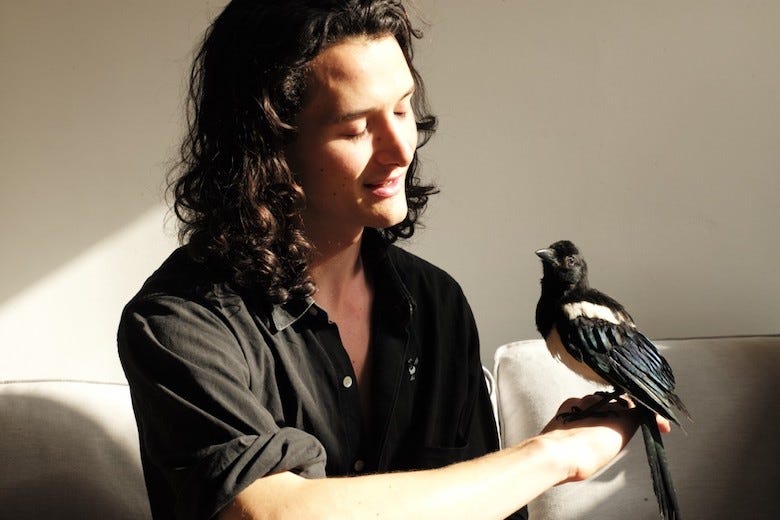The free bird ID app that changed my life
And an endearing memoir of life with a lovable magpie in London

“This app changed my life!” a reader wrote on Medium after I’d praised the free Merlin bird-identifier app. In a small way, it’s changed mine, too.
A dozen years ago, I began waking up each day to an avian Mormon Tabernacle Choir. I’d moved from the Northeast to a Gulf Coast town in the Mobile-Tensaw Delta, a place so biodiverse it’s known as “North America’s Amazon.”
The delta has more than 300 species of birds, and a lot of them didn’t just nest in the palm trees or sing from the live oaks. They treated my South Alabama yard as their private Walmart parking lot.
I’d lived with a few of the species back in New Jersey, the blue jays and cardinals and the robins that made a pit stop on the Gulf Coast on their way north from Mexico as the weather warmed. After living in Manhattan, I also knew the mellow ascending and descending tones of the coo of the mourning doves. And—this being Harper Lee country—I soon learned to identify the flutelike song of the mockingbirds.
Otherwise, I recognized so few birds, I often felt like a losing contestant on that old game show, “Are You Smarter Than a 5th Grader?” Fifth grade was, by chance, when I did a science report on goldfinches, the state bird of New Jersey. They abounded in Alabama, but I couldn’t recall their song.

One bird especially frustrated me. I saw it often, soaring above Mobile Bay, just across the street. It resembled a slightly smaller crow with a less raucous call.
Might I be seeing fish crows, which grab shrimp and other food out of the water with their feet? I knew they thrived on the Gulf Coast. But the birds I saw flew high enough that I couldn’t judge their size or calls well. And I never saw one snatching crustaceans from the bay, the way I saw brown pelicans plunge-diving for mullet.
Then a friend suggested I try the free Merlin Bird ID app from the Cornell Lab of Ornithology. It lets you identify birds by songs, calls, or a photo. You snap a picture or tap the microphone icon on the app, and it tells you what bird you’re seeing or hearing and other helpful facts about it.
I downloaded Merlin and identified my mysterious crow-like bird even before I’d even seen it. As soon as I heard its call, I pointed my phone in its direction and tapped the microphone icon on Merlin. In seconds I knew the bird was, in fact, a fish crow.
Since then I’ve aimed my phone at a dozen other birds, without snapping a photo but learning their identities from songs or calls recorded by the app. Every answer from Merlin has jibed with what I’ve heard from neighbors about avian life on our street. And I’ve acquired a low-grade addiction to the app. I try to open it daily to see if new birds have arrived or old ones have changed their tune.
I also like the Picture This app that helps you identify plants and trees. But I use Merlin more. On the Gulf Coast, bird-watchers are harder find than gardeners, and you have fewer places to turn with questions about what you’re seeing.
Merlin takes its name from the magician at the center of Arthurian legend. And it may lose some of its enchantment after I’ve identified all the birds in the palm trees and live oaks. But for now, at least when it comes to fish crows, I feel smarter than a fifth grader. The app lives up to its name: Merlin is a wizard.

A delightful memoir of life with a lovable bird
If you’d rather read about a bird than watch one, try Charlie Gilmour’s entertaining Featherhood: A Memoir of Two Fathers and a Magpie (Scribner, 2021).
In his 20s, Gilmour was startled to find that a magpie had flown into his London home and seemed to have no intention of leaving. It perched on a bathroom sink to watch him pee, hid bits of food in a USB port, and astonishingly, snatched a contact lens from a visitor’s eye. Its behavior unsettled him:
“What is it like to have a meat-eating bird gazing intently at your penis? It is unnerving.”
Why Gilmour kept the outlaw magpie, which he named Benzene, involves several elegantly interwoven narrative strands. One thread centers on the disappearance, when he was an infant, of his biological father, the British poet Heathcote Williams. Another strand involves his mother’s subsequent marriage to Pink Floyd’s David Gilmour, and a third, his fears about whether he can adjust to fatherhood after he marries the woman he lives with. The endearing Benzene flutters through the book and turns it into an inquiry into whether people, like wounded birds, can learn to fly.
Notes
https://www.mobile.org/things-to-do/outdoors/tensaw-river-delta/
https://merlin.allaboutbirds.org/
https://www.kirkusreviews.com/book-reviews/charlie-gilmour/featherhood/
Jan is an award-winning critic and journalist who has been the book columnist for Glamour, the book editor of a large newspaper, and a vice president of the National Book Critics Circle.
Interested in more quick reviews of great memoirs and other nonfiction? You’ll find them in the “100 Books I Like” section of Jansplaining.




I’ve been using Sound ID since it was launched, and I can usually identify all of the birds around my home in rural Southeast Georgia. Love it!
All of a sudden birds seem to be flocking into my life, so to speak - the other day I read an interview with author Jennifer Ackerman about her books on birds, yesterday my daughter discovered a cardinal's nest in a bush by our back door, and now this essay! Of all the birds I hear where we live, I most appreciate the cooing of the doves - I finding it very soothing, a coo indeed.